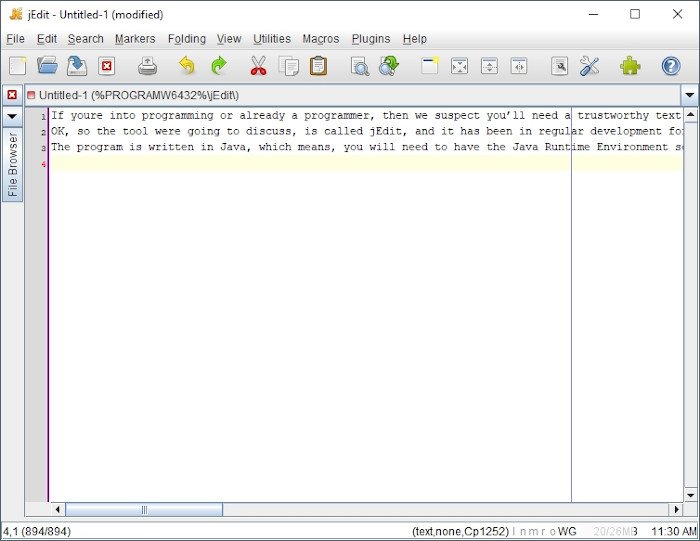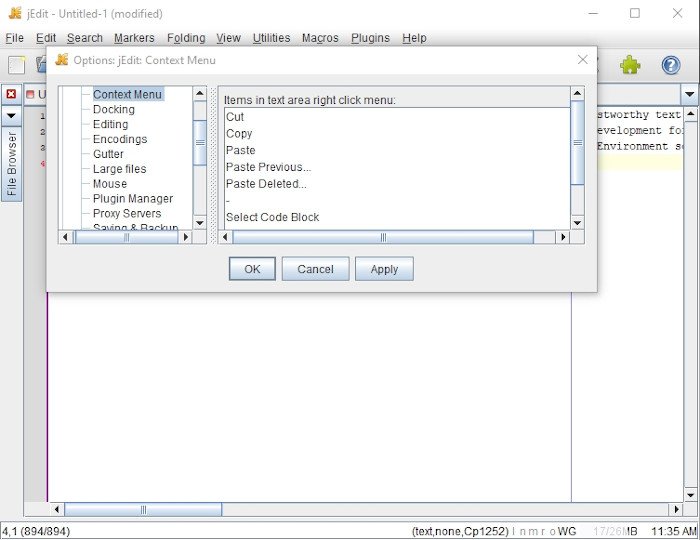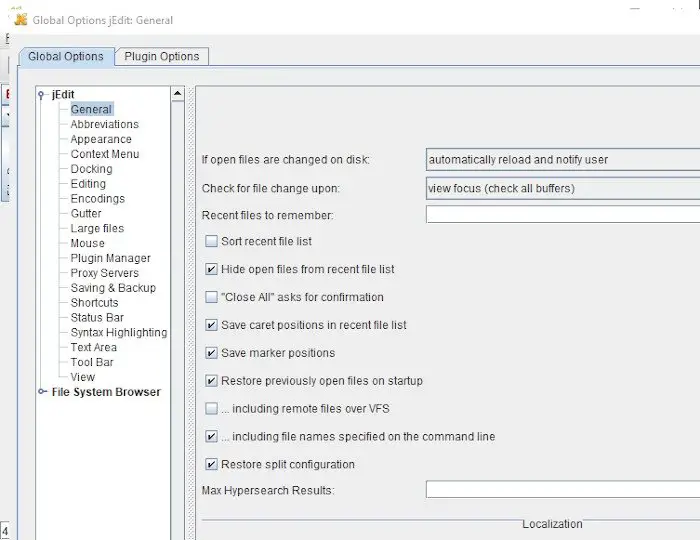If you’re into programming or already a programmer, then we suspect you’ll need a trustworthy text editor with years of developer support. Most will likely choose to go with the default text editor in Windows 10, but if you want something with more features, then check out jEdit. From our experience, it beats out many of the expensive tools of similar use cases, and that’s wonderful if you want to save some cash. Not to mention, it is based on the open-source GNU General Public License platform, so you can view the source code if needed.
The program is written in Java, which means, you will need to have the Java Runtime Environment software installed on your system beforehand. Not everyone likes Java these days, but hey, its still the backbone behind many popular programs today.
jEdit Text Editor for Programmers
Not every programmer needs to use this tool, but if you’re not interested in spending or using Notepad, then jEdit is a good step in the right direction.
1] Add your text

When it comes down to adding your text to jEdit, you can either type into the open area, or paste text previously copied. Now, once everything is in, you can do a few things from the edit area. For example, users can paste deleted text, select code blocks, or even change words to upper or lower case if this is required.
To do all of this, please press the right-click button on your mouse to see all the features and more.
2] Customize the menu

We can perform a few customizations. Right-click again, then click on Customize This Menu to open a new window. This window shows a ton of options, too many for us to go through all of them.
If anyone wants to make changes to the Context Menu, this is where they need to go. Users can also change the status bar and how editing works. Users can also make changes to the text editor section, appearance, docking, and much more.
We have to say, the entire thing is very overwhelming, so take your time to run through the choices before making decisions.
3] Search
Since this is a text editor, it wouldn’t be perfect without a search function that works as intended. This one, however, does far more than what you might expect. Here’s the thing, not only can you make simple searches, but the ability is there to search within directories.
Want to perform an incremental or hyper search? No problem just go right ahead. After searching for a word or phrase, you can replace it with ease and move along to the next one.
4] Markers
The user can add markers with ease, and the same can be said for removing them. There is even the ability to add markers with shortcuts, switch between markers, and more. A lot of options for the user to play around with.
5] Utilities

Our favorite section of jEdit, is the Utilities section. From here, folks can gain access to the Filesystem Browser, recent and current directories, along with Favorites. If you want to view the jEdit Home Directory, then no problem because that option is available here.
Additionally, if needed, the user can take a look at the Settings Directory, and the same goes for BeanShell and Action Bar. If one wants to repeat the last action, scroll down to the near bottom after selecting the Utilities tab.
Finally, the Utilities tab is home to Global Options, where folks can perform various changes to how jEdit operates. We suggest taking the time to check out the Global Options carefully because the information there is extensive and can cause confusion.
Download jEdit from the official website.
Leave a Reply